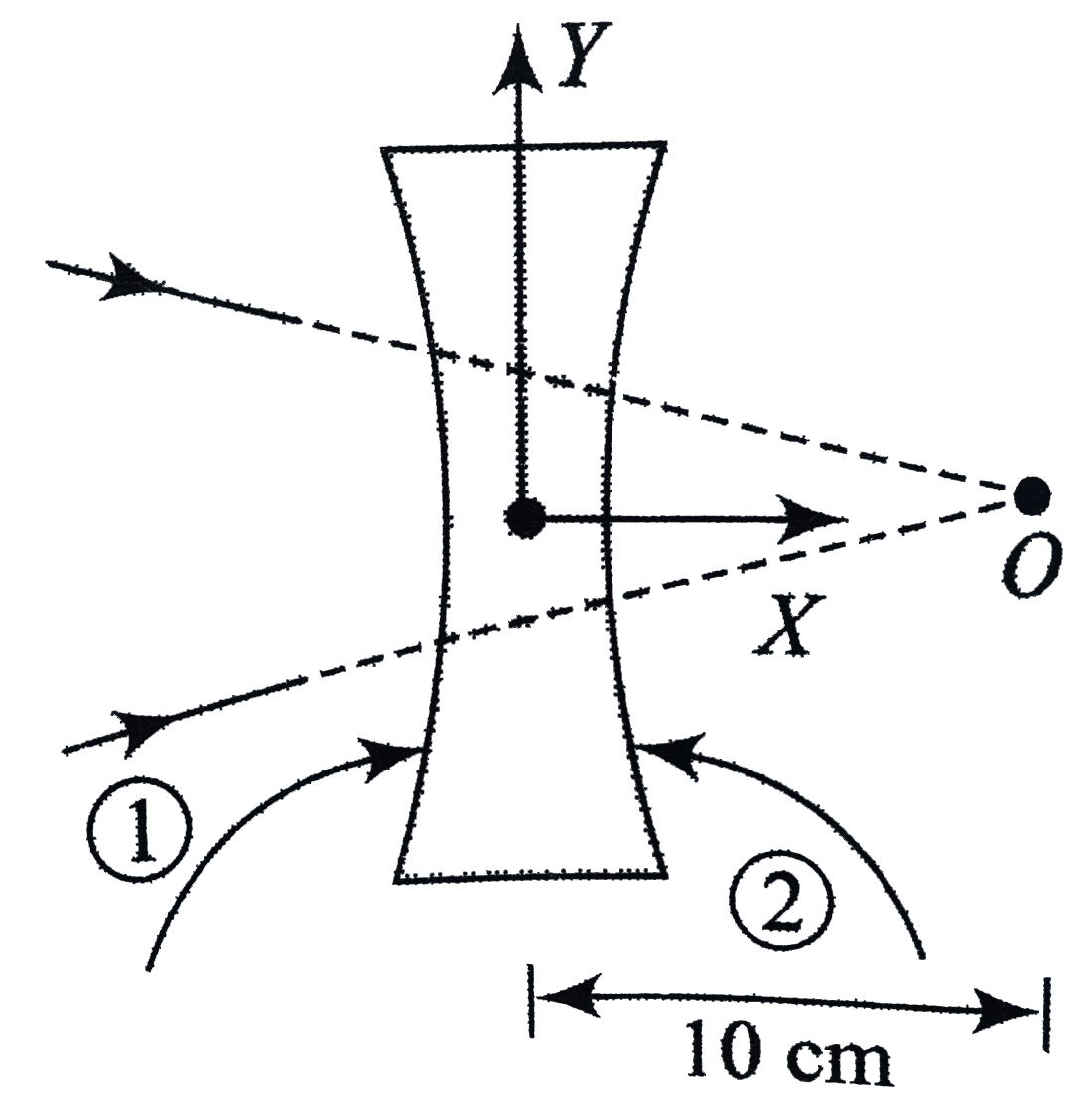Power of biconvex lens is 10 diopters and radius of curvature of each surface is 10cm.Then refractive index of material of lens is
43924
44082
43954
43892
The correct Answer is:D
To find the refractive index of the material of a biconvex lens given its power and radius of curvature, we can follow these steps:
1. Understand the Given Information:
- Power of the lens (P) = 10 diopters
- Radius of curvature of each surface (R1 and R2) = 10 cm
2. Convert Power to Focal Length:
- The relationship between power (P) and focal length (f) is given by:
P=1f
- Therefore, the focal length (f) can be calculated as:
f=1P=110 m=0.1 m=10 cm
3. Apply the Lens Maker's Formula:
- The Lens Maker's Formula for a biconvex lens is:
1f=(μ−1)(1R1−1R2)
- For a biconvex lens, R1 is positive and R2 is negative. Thus:
R1=+10 cm,R2=−10 cm
4. Substituting Values into the Formula:
- Substitute the values of f, R1, and R2 into the Lens Maker's Formula:
110=(μ−1)(110−1−10)
- Simplifying the right side:
110=(μ−1)(110+110)=(μ−1)(210)
- This simplifies to:
110=(μ−1)5
5. Solving for the Refractive Index (μ):
- Cross-multiplying gives:
1=(μ−1)⋅12
- Therefore:
μ−1=2⟹μ=3
6. Final Result:
- The refractive index of the material of the lens is:
μ=1.5
- Power of the lens (P) = 10 diopters
- Radius of curvature of each surface (R1 and R2) = 10 cm
- The relationship between power (P) and focal length (f) is given by:
P=1f
- Therefore, the focal length (f) can be calculated as:
f=1P=110 m=0.1 m=10 cm
- The Lens Maker's Formula for a biconvex lens is:
1f=(μ−1)(1R1−1R2)
- For a biconvex lens, R1 is positive and R2 is negative. Thus:
R1=+10 cm,R2=−10 cm
- Substitute the values of f, R1, and R2 into the Lens Maker's Formula:
110=(μ−1)(110−1−10)
- Simplifying the right side:
110=(μ−1)(110+110)=(μ−1)(210)
- This simplifies to:
110=(μ−1)5
- Cross-multiplying gives:
1=(μ−1)⋅12
- Therefore:
μ−1=2⟹μ=3
- The refractive index of the material of the lens is:
μ=1.5
Topper's Solved these Questions
Similar Questions
The power of a biconvex lens is 10 dioptre and the radius of curvature of each surface is 10 cm. Then the refractive index of the material of the lens is
View SolutionThe focal length of an equiconvex lens is equal to radius of curvature of either surface. What is the refractive index of the material of the prism ?
View Solution
Knowledge Check
The power of a biconvex lens is 10 dioptre and the radius of curvature of each surface is 10 cm. Then the refractive index of the material of the lens is
A98B53C32D43The power of a biconvex lens is 10 dioptre and the radius of curvature of each surface is 10 cm. Then the refractive index of the material of the lens is
A3/2B4/3C9/8D5/3The focal length of a double convex lens is equal to radius of curvature of either surface. The refractive index of its material is
A3/2B1C4/3Dnone of these
The focal length of an equiconcave lens is 34 times of radius of curvature of its surfaces. find the refractive index of the material of lens. under what condition will this lens behave as a converging lens?
View SolutionA converging bundle of rays is intercepted by a biconcave lens. The radii of curvature of both surfaces are 20cm and the refractive index of the material of the lens is 1.5. If the rays originially converged to a point 10cm in front of the lens, where will they now converge after passing through the lens?

View SolutionA biconvex lens has a focal length half the radius of curvature of either surface. What is the refractive index of lens material ?
View SolutionA bioconvex lens whose both the surface have small radii of curvature has a power of5D.The refractive index of material of lens is 1.5.The radii of curvature of each surface is:-
(1)20cm,(2)15cm,(3)10cm,(4)5cm
View SolutionThe radius of curvature of each surface of a lens is 40 cm. Its refractive index is 1.5. The focal length of lens will be
View Solution
